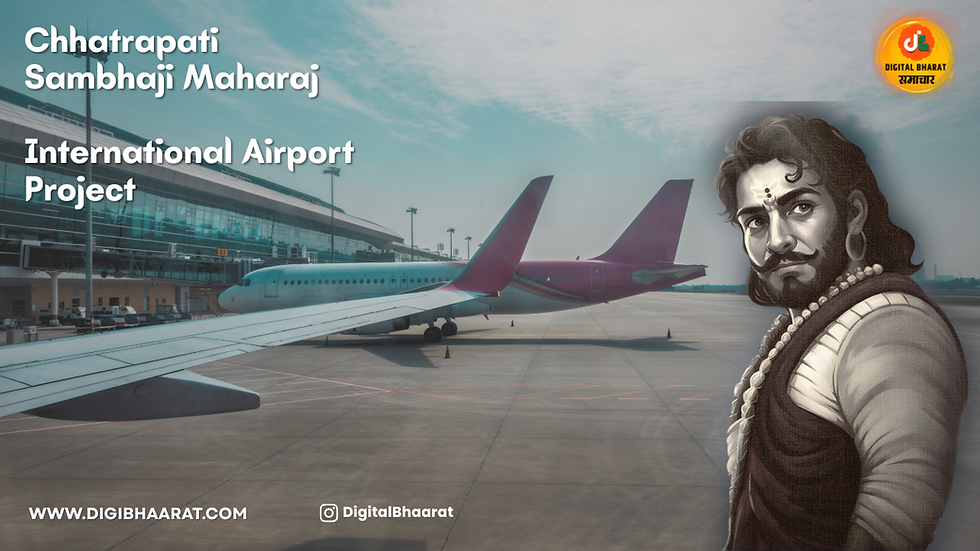Pune Metro Line 3 Route Map, Stations & Status Updates
- Tejas Purkar

- Nov 7
- 4 min read
For years, commuting in Pune was a daily siege on productivity and well-being. The city’s explosive industrial growth had outpaced its infrastructure, creating a daily gridlock that held its ambition hostage. The familiar scene for anyone navigating the city during peak hours was a sea of vehicles locked in a slow, frustrating crawl, a frustrating byproduct of Pune’s own success.
Against this backdrop, the arrival of the Pune Metro felt like a glimpse into an entirely different future. Sleek, air-conditioned trains gliding on elevated tracks and silent, modern stations rising above the chaos offered a clean, efficient alternative. Commuters could finally bypass the city's most congested arteries, turning an hour-long ordeal into a predictable, comfortable journey.
But behind the smooth ride and pristine platforms lies a story far more complex than most passengers realize. The journey to create this new steel spine was a microcosm of modern India's developmental battles—a decades-long saga of competing governance models, frustrating delays, and unprecedented challenges. This is the story of what it really took to bring the Pune Metro to life.
1. It’s Not One Metro, But Two (And They're Run Very Differently)
One of the most surprising facts about the Pune Metro is that it isn't a single, monolithic system. The project is managed and implemented by two distinct bodies, each with a different operational model.
Maha Metro (Maharashtra Metro Rail Corporation Limited): A 50:50 joint venture between the Government of India and the Government of Maharashtra, Maha Metro is the implementing body for the core Purple and Aqua Lines.
PMRDA (Pune Metropolitan Region Development Authority): This regional authority is overseeing the development of Line 3 (the Pink Line), which connects the crucial Hinjawadi IT park to the city center.
What makes this structure noteworthy is the starkly different approach for Line 3. The Pink Line is being implemented on a public-private partnership (PPP) basis by Pune IT City Metro Rail Limited, a special purpose company formed by a consortium of Tata Projects and Siemens. This hybrid strategy reflects a pragmatic, if complex, approach to infrastructure funding—leveraging public funds for core routes while harnessing private sector efficiency and capital to connect high-value commercial hubs like the Hinjawadi IT park.
2. The Project Was a Decade-Long Dream Delayed by "Unnecessary Discussions"
While the first sections of the Pune Metro opened to the public in March 2022, the dream of a robust mass transit system is much older. Conversations and planning began in the early 2000s, but the path to execution was long and fraught with delays.
The Detailed Project Report (DPR) was first undertaken in 2008. Although the state government approved the project in 2012, it took another four and a half years to receive final approval from the Central Government on December 7, 2016. "Metroman" E. Sreedharan, a key figure in India's metro revolutions, lamented the lost time during a 2013 visit.
"Pune lost five valuable years in unnecessary discussions instead of executing the project."
Sreedharan's critique highlights a critical lesson in urban development: delays are not neutral. They incur tangible costs in the form of budget inflation, prolonged traffic misery for millions, and a slower pace of economic growth for a city straining at the seams.
3. It’s a Direct Response to a Shocking Statistic: More Vehicles Than People
The necessity of the Pune Metro is best understood through one startling statistic. By April 2018, the number of registered vehicles in Pune had officially surpassed the city's human population, standing at a staggering 3.62 million.
This explosion in private vehicle ownership placed the urban transport system under severe, unsustainable stress. The consequences were clear: longer travel times, worsening air pollution, and a troubling rise in road accidents. The city's roads had long passed their carrying capacity.
The Pune Metro was conceived as a direct and necessary intervention. Its primary goals were to significantly increase the share of public transport, decongest critical arterial routes like Paud Road and Nagar Road, and provide a safe, fast, and eco-friendly mobility alternative. It was not just a convenience project; it was an essential solution for a city choking on its own traffic.
4. A Collision Course with Rivers and Royalty
Building a massive infrastructure project through a dense, historic city is never easy, but the Pune Metro faced hurdles that went far beyond typical engineering. The project's alignment forced it into contention with sensitive environmental zones and protected national monuments.
First, an environmental interest litigation was filed in the National Green Tribunal (NGT) over the metro's proposed alignment along the Mutha River bed. Citing potential damage to the riverbed ecology, the NGT issued an interim stay on construction, creating a significant legal roadblock that required extensive review.
Second, the alignment of Line 2 ran into conflict with the Aga Khan Palace, a monument of national importance. The National Monument Authority rejected permission to build within the prohibited 100-meter radius of the palace. This forced Maha Metro to undertake a third revision of the alignment, which ultimately increased the project cost by ₹135 crore. These hurdles demonstrate that in a city as layered as Pune, modern infrastructure cannot simply be engineered; it must be meticulously negotiated through a dense landscape of environmental law, national heritage, and public sentiment, turning engineers into diplomats.
Conclusion: A City in Motion
The Pune Metro is far more than just a new way to travel. It is a testament to the city's ability to navigate complex governance, overcome decades of delay, and engineer solutions to critical urban problems. Each smooth journey masks a history of tough negotiations, legal battles, and meticulous planning.
As this steel spine grows, the ultimate question remains: Will it be strong enough to support a city grappling with its own success, bridging the divides between public and private ambition, development and heritage, and a population that once had more vehicles than people?



Comments